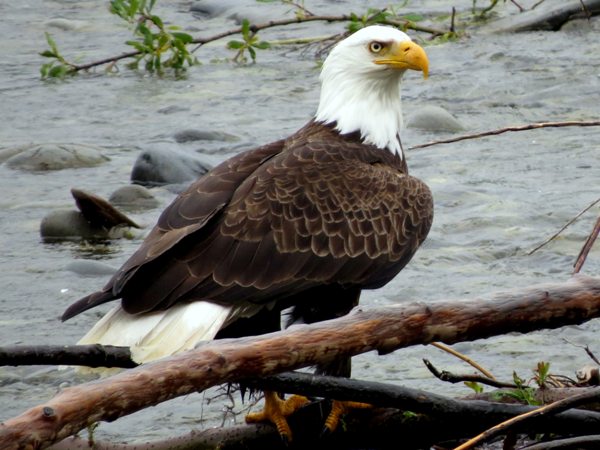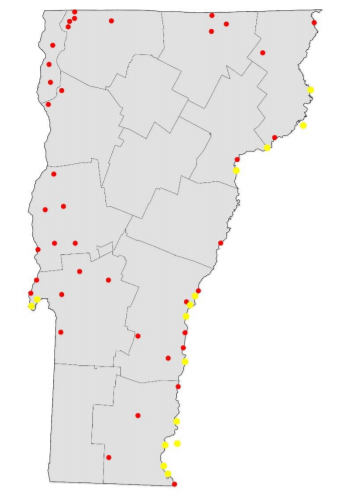
In 1972, bald eagles were officially listed as endangered by the State of Vermont. Thanks to continuous efforts by community and state agencies, bald eagles have now met the criteria for a sustainable, breeding population. The Scientific Advisory Group on Birds has unanimously recommended that bald eagles be formally listed as “recovered” on the State Endangered Species List. Efforts undertaken to revitalize the bald eagle population in Vermont include reintroduction programs, habitat protection, a DDT ban, and community bird watching and tracking. Special recognition goes to Audubon Vermont, the Vermont Fish & Wildlife Department, and the Bird Species Advisory Group for their important roles in eagle reintroduction.

At the conclusion of the 2020 nesting season, 38 breeding pairs of bald eagles resided within Vermont, and a record 64 eagle chicks were raised. Previously, bald eagles, while often seen flying through Vermont, had not bred in the state since the 1940s. Eagles resumed nesting in Vermont in 2008, and the number of chicks has steadily increased. Additional bald eagle pairs nest throughout New Hampshire and the New York side of Lake Champlain, and these eagles can sometimes be spotted in Vermont airspace.
Bald eagles can frequently be spotted around water. The Connecticut River, and its various tributaries, such as the White and Saxtons River, provide a healthy supply of fish for Vermont bald eagles. Lake Iroquois and Lake Champlain also support bald eagle populations. A map of bald eagle nests, taken from this report compiled by Vermont Fish & Wildlife, is displayed in this article. Red dots signify nests within Vermont, while yellow dots mark nests outside of Vermont state lines.
If you’d like to contribute to Vermont’s continuing efforts to protect bald eagles, you can submit any sightings to Audubon Vermont using this link. Reporting sightings keeps wildlife experts and ornithologists informed on the location and approximate territory size of bald eagles. Additional information on bald eagles in Vermont can be found on the Vermont Fish & Wildlife website, specifically their bird report.
Joshua Nichols is the Vermont Maturity associate editor.
Related Articles & Free Vermont Maturity Subscription



Comment here